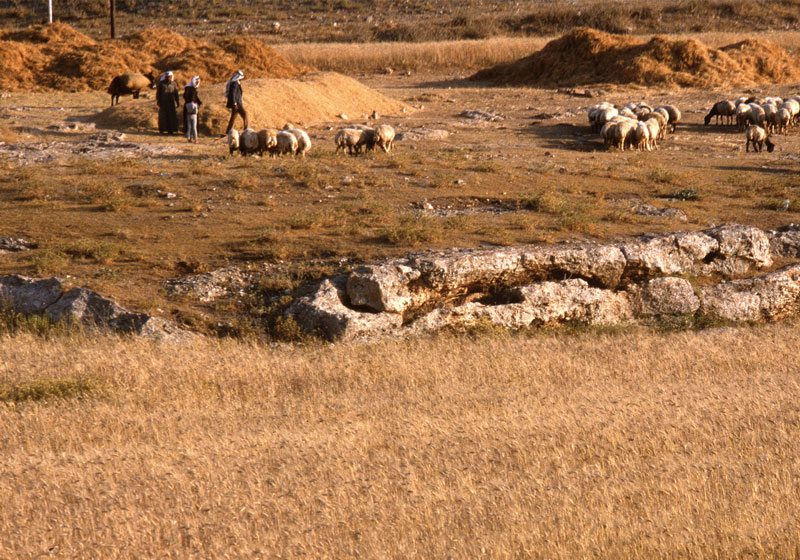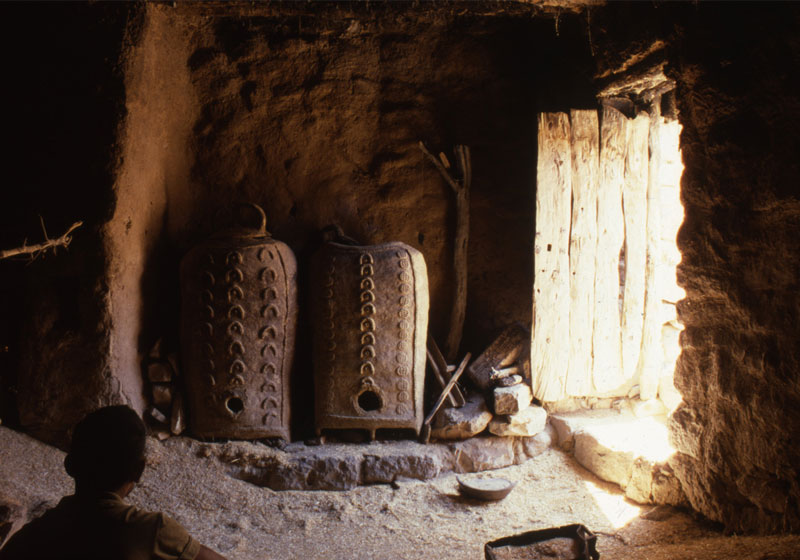A Village above the Wheat Lands

Maain as a name has been snatched, with all unfairness, by the hot springs which are some 22 km away from this small lofty village. Occupying a hilltop, Maain Village overlooks the plain of Madaba and has a commanding 360 degree vista. It crowns an elevated breezy summit surrounded by a landscape of deep-red soil; the western edge of Balqa plateau, one of Jordan’s most fertile wheat lands.
The village is almost immediately spotted after leaving Madaba heading southwest. As you approach the traditional village center only 7 km from Madaba, the road climbs up and passes just north of the old village core. Most visitors pass by on their way to the hot springs paying little notice.
Although traditional Jordanian villages are not prepared as or considered a visiting destination, exploring them reveals, in many cases, a special charm and a sense of authenticity.

A drive in Maain's few streets will reveal some of its remaining traditional architecture, it will also stir a wave of excitement – "there's a stranger in town." When spotting an elevation or better a group of stone houses, you can stop. Delay exposing your camera for later. Instead you can check the name of the village in the index of your guide (check different spelling alternatives) and look at some published maps of the area. This research is better conducted next to your car and not in it. This way the villagers, now watching you, are encouraged to approach and start a dialogue. In general, the local villagers find it entertaining to meet strangers. And after the first conversation things get easier and in a few minutes teapots will be put on stoves, and you'll be enjoying tea while being escorted on a private tour of some lived-in as well as abandoned houses.
Maain was built on top of churches from the Byzantine and Umayyad periods. Traditional houses used mostly stone of these periods, with few alterations and sometimes ornamentation added. Maain, like most other traditional villages, was built during a construction boom that happened all over rural Jordan between 1890 and 1930.
When these houses were built, the Byzantine structures were in ruin for the last 1,000 years. In Maain, until the 1980s, fragments of Byzantine architecture were still scattered in some of the abandoned courtyards. Relics such as heavy pillar drums and capitals were too heavy to use in the traditional buildings, while lighter fragments of historic stones (including parts of marble statues in one case) were incorporated in the courses of an external wall.
The traditional Maain house has been shaped by the availability of stone, in plenty, and a limited supply of wood. Stone was used to build the walls of a simple rectangular house intercepted by a few big arches acting as main beams. With the outer walls, the arches carry a ceiling made of wood and earth.
Wheat and other grains have almost completely shaped the interior. With large grain silos built of mud and proudly placed as a centerpiece facing the main door, the house functioned as a shelter for wheat and people; enough wheat should be stored to provide for the year-long period between harvests.

Typically, Maain's traditional houses were built around courtyards used for circulation and works such as weaving or food drying. The courtyards also serves the function of water harvesting, along with the surrounding roofs, gathering rainwater during winter and securing it into underground cisterns mostly still functional from the Byzantine times.
Maain's traditional homes represent some of the last examples of architectural self-sufficiency, the ability of villages to produce houses that are "homemade". This architecture retains within it samples of rural economic independence, and with all its demanding maintenance – which can be mitigated – it also represents a sample of "green architecture," friendlier to the environment and to the eye.
A lazy destination, good for half a day and in long summer days a drive to Maain is possible after work, just before sunset. A visit can be combined with a stop at Mount Nebo, Moses springs, and on the way back a sunset meal at Haret Jdoudna in Madaba. Don’t forget your camera.